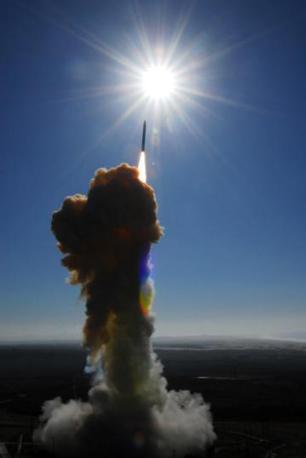 I continue the presentation and analysis of the experts’ report on the future NATO strategic concept, an endeavor which I have began in May, with the section dedicated to the future missions and military affairs. The final section of the experts’ report deals with NATO’s future missions and the development of future military capabilities required to fulfill them. Section five of the report provides an analysis of the current needs and capabilities and makes recommendations on what missions and capabilities should be provided in the future strategic concept of the Alliance.
I continue the presentation and analysis of the experts’ report on the future NATO strategic concept, an endeavor which I have began in May, with the section dedicated to the future missions and military affairs. The final section of the experts’ report deals with NATO’s future missions and the development of future military capabilities required to fulfill them. Section five of the report provides an analysis of the current needs and capabilities and makes recommendations on what missions and capabilities should be provided in the future strategic concept of the Alliance.
Tag Archives: Ballistic Missile Defense
Romania will host elements of the US missile shield 3
Romania’s President, Traian Băsescu has announced yesterday the willingness of his country to host parts of US the ballistic missile defense system on its territory. The decision to allow the United States to deploy anti-ballistic missiles in Romania was taken in a meeting of the Supreme Defense Council (CSAT). According to Traian Băsescu Mrs. Ellen Tauscher the Under Secretary of State for Arms Control and International Security has formally proposed on behalf of the United States of America that Romania should host on its territory an anti-ballistic missile system. The US State Department has confirmed the agreement while the US embassy in Bucharest has saluted president Băsescu’s decision. Following the CSAT decision bilateral negotiations will be started, however the final approval for the deployment of the missiles must come from the Romanian parliament. The Romanian president has stated that the missile shield is not directed against Russia, but is designed to protect against other threats.
US makes major strategic shift on Missile Defense 3

A ground-based interceptor lifts off from Vandenberg Air Force Base, Calif., Dec. 5, 2008. (DoD photo by Joe Davila, U.S. Air Force/Released)
The President of the United States, Barack Obama has announced on September 17, a major shift in the policy of the US concerning the deployment of anti-ballistic missile defenses in Central and Eastern Europe in order to protect its European allies from a possible Iranian threat. In this article I will argue that this move is a part of a larger strategy of retrenchment, designed to make American power more flexible and adaptable in an international system defined both by symmetrical and asymmetrical threats. The move does not signal by any means a waning of America’s commitment to Europe’s security or for that matter, the security of Central and Eastern Europe. Canceling the deployment of the Ground Based Interceptors in Poland and the X band radar in the Czech Republic does not mean the United States is giving up on creating a national missile defense capability.
Ballistic Missile Defense: A New Divisive Issue between Russia and NATO Răspunde
A new divisive issue between Russia and NATO has come to the fore: the deployment and development of ballistic missile defenses in Europe by the United States in Central Europe.
The debate regarding missile defense is not new. It dates back to the Cold War when the United States used the Strategic Defense Initiative, colloquially known as Star Wars to bankrupt the Soviet Union. Today however ballistic defenses have returned as an issue of international politics when the United States decided to retreat from ABM treaty signed in 1972 and develop this type of strategic defense in order to protect itself from countries like Iran and North Korea – the infamous “rogue states” from the “axis of evil”.
